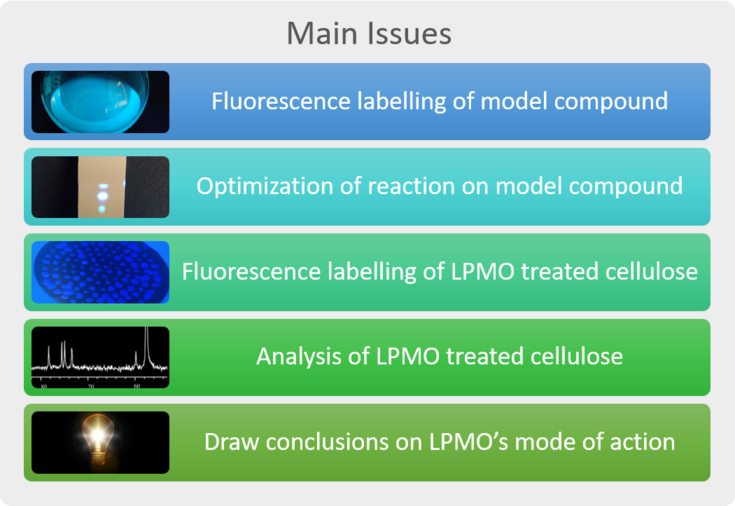Determination of carboxylic groups from Lytic polysaccharide monooxygenase oxidized cellulose by fluorescence labelling
SUPERVISOR: Antje POTTHAST
PROJECT ASSIGNED TO: David BUDISCHOWSKY
Lytic polysaccharide monooxygenases (LPMOs) are a group of powerful copper-containing oxidative enzymes capable of efficiently degrading the most abundant and recalcitrant polysaccharides such as cellulose and chitin. LPMOs were first discovered in 2010 and are widely spread among the microbial kingdoms since they have been found in fungi, bacteria, virus, invertebrates and algae. Their oxidative power results from a single copper ion in the active site that can activate dioxygen to break carbon-hydrogen bonds at the C1 or C4 position of the polysaccharide.
It was shown that oxidation of cellulose by LPMO causes the formation of aldonic acids on the reducing end and correspondingly keto groups at the non-reducing end. These oxidized groups create weaknesses and nicking points in the fiber architecture facilitating an easier breakdown of the fiber. Through this ability the enzyme gained interest in bioconversion of lignocelluloses. Besides the degradation reaction also fiber surface modifications are of interest and may offer new perspectives for cellulose processing.
In this study it is planned to develop a novel approach for the quantification of the oxidised reducing end groups, i.e. carboxyl groups in LPMO treated celluloses. This shall be achieved by labelling carboxyl groups with a fluorescence marker through coupling reactions.
The goal of this project is to thoroughly study the mode of LPMO action on the cellulosic substrates in order to direct the reaction mechanism to the desired pathway.

